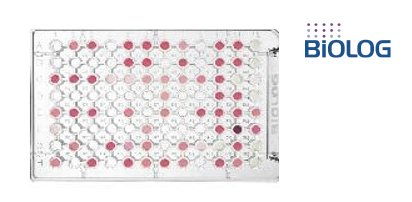
FF (Filamentous Fungi) MicroPlate
The Biolog FF MicroPlate™ (Figure 1) is the first broad based rapid identification and characterization product designed for filamentous fungi and yeast, including species from the genera Aspergillus, Penicillium, Fusarium, Alternaria, Mucor, Gliocladium, Cladosporium, Paecilomyces, Stachybotrys, Trichoderma, Zygosaccharomyces, Acremonium, Beauveria, Botryosphaeria, Botrytis, Candida, and Geotrichum.
ReadmoreProduct data and images for FF (Filamentous Fungi) MicroPlate
Specification for FF (Filamentous Fungi) MicroPlate
Over the past several years, mycology has emerged as an increasingly important part of the microbiology laboratory. Fungal contaminants can contribute to significant losses in food and industrial processes. Environmental monitoring over the last several years has focused increasingly on fungal isolates as the source of conditions such as sick building syndrome. In agriculture, fungal pathogens cause serious problems requiring constant attention from phytopathologists. In human disease, the list of fungal pathogens has grown in the clinical laboratory due to an increased population of immunocompromised patients.
The Biolog FF MicroPlate™ (Figure 1) is the first broad based rapid identification and characterization product designed for filamentous fungi and yeast, including species from the genera Aspergillus, Penicillium, Fusarium, Alternaria, Mucor, Gliocladium, Cladosporium, Paecilomyces, Stachybotrys, Trichoderma, Zygosaccharomyces, Acremonium, Beauveria, Botryosphaeria, Botrytis, Candida, and Geotrichum.
The FF MicroPlate employs a redox chemistry similar to Biolog's other proven microbial identification/characterization products. This chemistry, based on reduction of tetrazolium, responds to the process of metabolism (oxidation of substrates). Biolog’s universal chemistry works with any carbon source and greatly simplifies the testing process, as no color developing chemicals need to be added after incubation.
The FF database also analyzes fungal growth via turbidimetric analysis. Analysis of both color development and turbidity provides for extremely accurate identifications to the species level. There are currently over 70,000 named species of an estimated 250,000 species of fungi. For scientists working with fungi outside the Biolog database, the FF MicroPlate and MicroLog™ software have been designed to allow the user to create their own database by adding the patterns produced by new cultures.